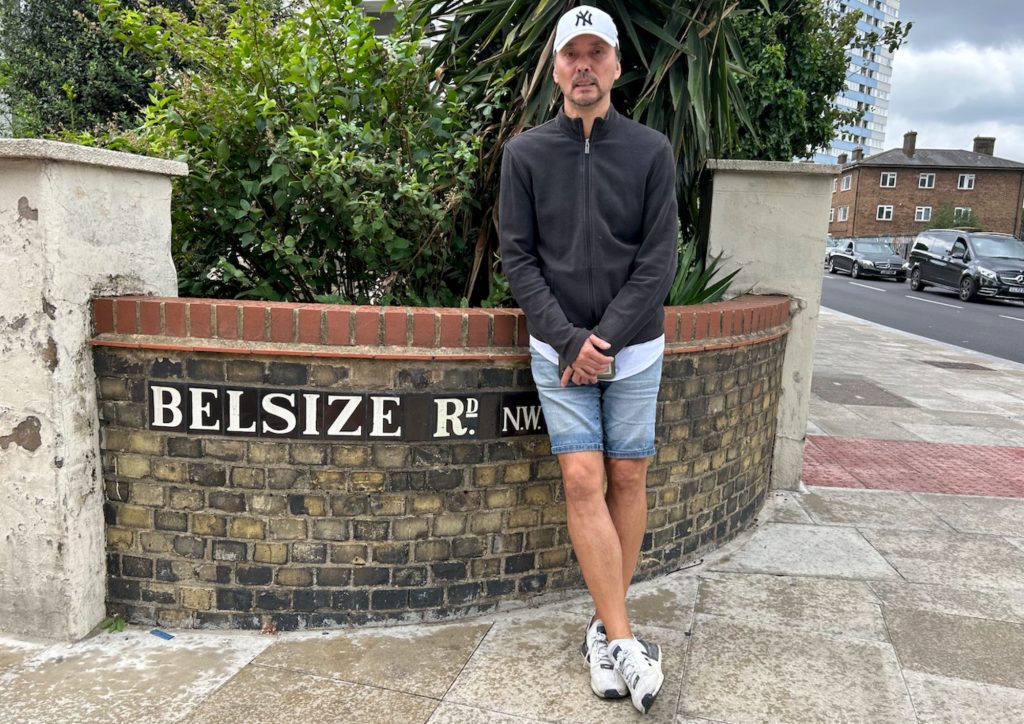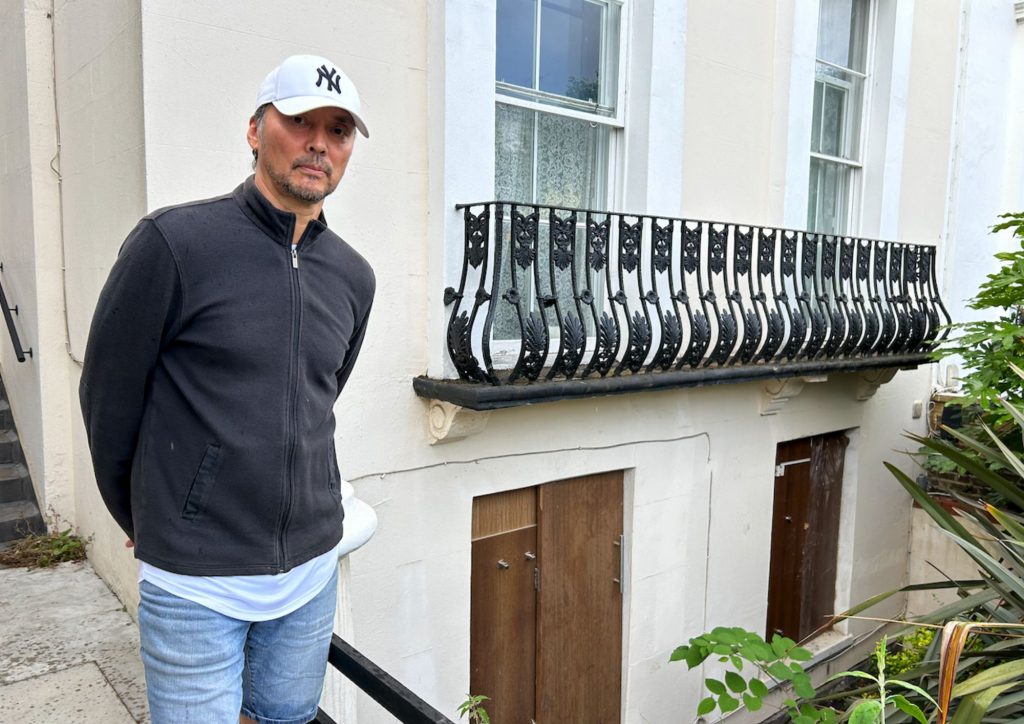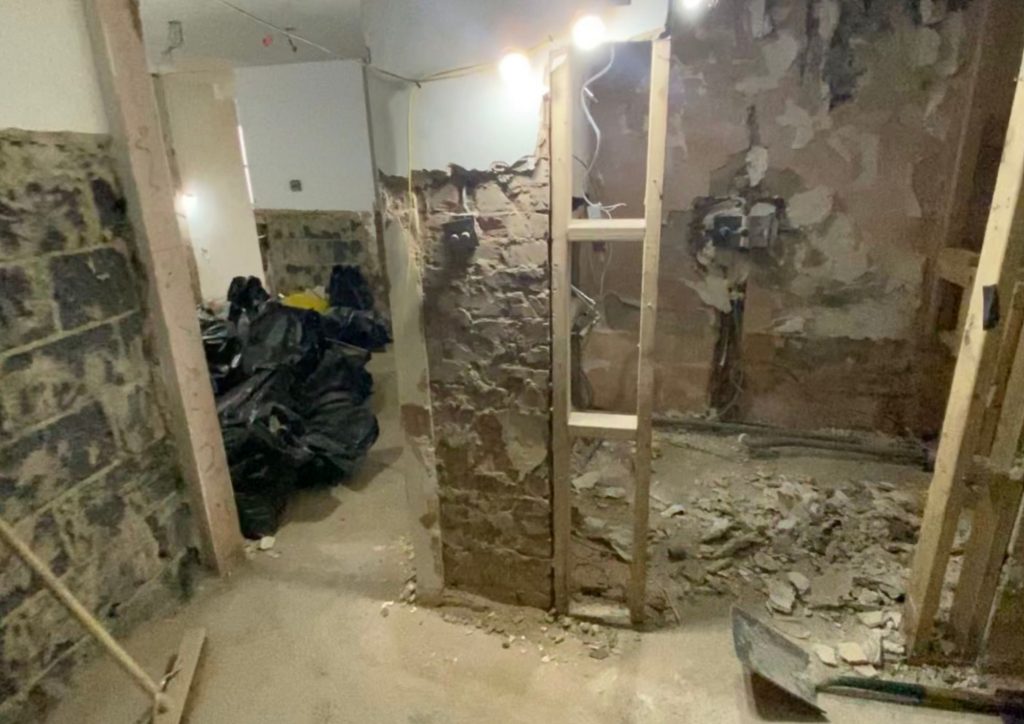Investment or dividends? Flood-hit residents' fury at water company's debt crisis
Photographer still has not been able to return home after 18 months
Monday, 10th July 2023 — By Anna Lamche

Kumiko Matsuoka, Joan Munro and Marcy Doane at the CRASH meeting on Monday
FLOOD-STRUCK residents who have seen their streets and homes repeatedly submerged in water and raw sewage have responded with anger to warnings that Thames Water could now collapse.
Despairing residents in South Hampstead criticised the water provider for paying dividends to their shareholders while failing to invest in infrastructure.
Joan Munro, of the South Hampstead Flood Action Group, said: “Obviously, it’s very worrying. But as it happens, we’ve been very disappointed in Thames [Water]. They seem to have given lots of money to their shareholders, but actually they weren’t really proposing to do much about the flooding in this area.”
She added: “We think they’re responsible because the sewers aren’t big enough. In 2021, our local sewers basically exploded because the capacity is not enough.”

Mark Albertsen’s home was wrecked by a pipe burst
The New Journal reported on the most recent flood in the area that occurred late last year. Christmas was ruined for dozens after a burst water main flooded homes. Some people were helped to safety in boats. It was announced last week that ministers are scrambling to agree a contingency plan in case Thames Water folds.
England’s largest privatised water provider is reported to have crushing debts of around £14bn.
There were even warnings that residents would be hit with bigger bills – and the company was being asked how it had used all the money it collects each year.
Mark Albertsen lived in Belsize Road, Kilburn, for 15 years before he was forced from his basement flat by the flash flood of July 2021. Water contaminated with sewage swelled to depths of 5ft inside his home, smashing his windows and destroying all his possessions. “It ruined everything. Every room got destroyed,” he said.
CCTV footage recorded by cameras on Mr Albertsen’s home at the time shows huge volumes of high-pressure water spurting from beneath a manhole cover and flooding the street.
Mr Albertsen, a designer and fashion photographer, is still living in temporary accommodation, two years on.
“It’s never ended,” he said, adding that he had suffered a stroke in 2019 and that the stress of the floods slowed his rehabilitation.

Mark Albertsen outside his flooded home and what it still looks like inside

Mr Albertsen said: “I’m under so much stress of trying to get my life back together but I can’t. It’s been on hold… I’m just stuck in limbo.”
According to Mr Albertsen, Thames Water have only visited his property once since the day of the flood, and have not offered him any help or compensation.
In the intervening years he has been waiting for his insurance company and builders to repair his home. Thames Water built a flood defence system in 2015 in an attempt to protect the area repeatedly damaged by sewage flooding in Kilburn, but it failed to ward off disaster in 2021.
At the time, Thames Water claimed it could not be blamed for destruction caused by a heavy downpour of rain.
“The only person I can think of that would be responsible for it is Thames Water. [It was] their s**t water coming through my flat: they’ve got to be responsible,” Mr Albertsen said, adding that he is hoping to one day take the company to court. He said: “They needed to learn lessons. A flood happened about 20 years ago in Belsize Road. There were meant to be actions taken by Thames Water to prevent this happening again.”
Jody Thompson, whose home was flooded with sewage in the same flash floods, said she was only able to return home in the summer of last year, adding that Thames Water “absolved themselves of any responsibility”. She said: “All they did was come and spray a bit of disinfectant around days after [it happened] which was not going to do anything because there was virtually knee-deep sewage throughout the flat.”
She was not offered any compensation.
“The sooner the water companies are nationalised, the better,” Ms Thompson said. “There is no way taxpayers should be paying for the failures, not just of the water companies like Thames [Water], but the likes of Ofwat, because where have been their regulatory powers over the past decades, to actually stop them from paying their shareholders dividends rather than reinvesting in infrastructure?”
She added: “I appreciate that just because a company is in public ownership doesn’t mean it’s going to be wildly better, but at least we know that the profits aren’t lining the pockets of lots of overseas investment and pension funds. Instead, it will be invested into not just maintaining the structure that we’ve got, but bringing it up to standards fit for the 21st century.”
In recent days Thames Water has been in crisis talks with shareholders, the Government and Ofwat, the industry regulator, in an attempt to shore up the company’s future.
Ofwat has also come under fire for failing to effectively regulate a sector which has collectively paid out over £72bn in dividends to its shareholders privatisation in 1989.
A Thames Water spokesperson said: “Following the storms which hit London and Camden in July 2021, we commissioned an independent review to investigate the cause of the flooding and offer solutions as extreme weather is set to become more common due to climate change.
“It found the intensity of the storm completely overwhelmed all drainage systems, including the sewers, which were never designed to deal with that level of rainfall. In the face of such heavy rainfall, it also concluded simply building bigger and deeper sewers is not the answer.
“Instead, organisations with flood management responsibility, including water companies and local authorities, must work together to create more permeable surfaces and sustainable drainage schemes to slow down flows on the surface to the sewers. This would bring London in line with other major cities around the world which have experienced severe flooding, such as Copenhagen and Amsterdam.”
